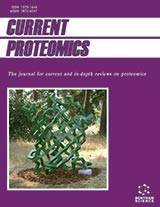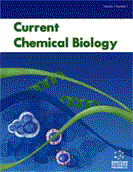Abstract
Glioblastoma multiforme (GBM: grade IV astrocytoma) is the most common but lethal form of brain cancer. The median survival time of GBM patients is only 15 months. Only a few predictive markers have been reported for prognosis and treatment.
This study integrates gene expression and protein-protein interaction data to search for pathways that are differentially regulated between long-term and short-term survivors of GBM patients. A novel objective function for greedy search was introduced in search for 47 significantly and differentially expressed sub-networks (SDES) or pathways in a greedy fashion. The resultant putative pathways (involving 156 genes) were tested for enrichment of known GBM cancer genes as well as GO terms related to “biological process.” Integration of gene expression profiles of GBM patients with a PPI network improves the recall rate of known GBM driver genes and shows the better GO enrichment in comparison to the conventional gene-set approach that is based solely on the expression data.
Keywords: Brain, cancer, GBM, gene, integration, pathway, PPI, protein, sub-network.
Current Bioinformatics
Title:Mining of Network Markers for Brain Tumor from Transcriptome and Interactome Data
Volume: 8 Issue: 3
Author(s): Jongkwang Kim
Affiliation:
Keywords: Brain, cancer, GBM, gene, integration, pathway, PPI, protein, sub-network.
Abstract: Glioblastoma multiforme (GBM: grade IV astrocytoma) is the most common but lethal form of brain cancer. The median survival time of GBM patients is only 15 months. Only a few predictive markers have been reported for prognosis and treatment.
This study integrates gene expression and protein-protein interaction data to search for pathways that are differentially regulated between long-term and short-term survivors of GBM patients. A novel objective function for greedy search was introduced in search for 47 significantly and differentially expressed sub-networks (SDES) or pathways in a greedy fashion. The resultant putative pathways (involving 156 genes) were tested for enrichment of known GBM cancer genes as well as GO terms related to “biological process.” Integration of gene expression profiles of GBM patients with a PPI network improves the recall rate of known GBM driver genes and shows the better GO enrichment in comparison to the conventional gene-set approach that is based solely on the expression data.
Export Options
About this article
Cite this article as:
Kim Jongkwang, Mining of Network Markers for Brain Tumor from Transcriptome and Interactome Data, Current Bioinformatics 2013; 8 (3) . https://dx.doi.org/10.2174/1574893611308030005
| DOI https://dx.doi.org/10.2174/1574893611308030005 |
Print ISSN 1574-8936 |
| Publisher Name Bentham Science Publisher |
Online ISSN 2212-392X |
 11
11
- Author Guidelines
- Bentham Author Support Services (BASS)
- Graphical Abstracts
- Fabricating and Stating False Information
- Research Misconduct
- Post Publication Discussions and Corrections
- Publishing Ethics and Rectitude
- Increase Visibility of Your Article
- Archiving Policies
- Peer Review Workflow
- Order Your Article Before Print
- Promote Your Article
- Manuscript Transfer Facility
- Editorial Policies
- Allegations from Whistleblowers
Related Articles
-
A Phosphoproteomics Approach to Identify Candidate Kinase Inhibitor Pathway Targets in Lymphoma-Like Primary Cell Lines
Current Drug Discovery Technologies Dimeric Approaches to Anti-Cancer Chemotherapeutics
Anti-Cancer Agents in Medicinal Chemistry Neonatal Fc Receptor and its Role in the Absorption, Distribution, Metabolism and Excretion of Immunoglobulin G-Based Biotherapeutics
Current Drug Metabolism Use of ‘Omic’ Approaches in Unraveling Mechanisms of Gene-Environment Interactions
Current Genomics Multistage Nanovectors Enhance the Delivery of Free and Encapsulated Drugs
Current Drug Targets Inhibitory Effects of Novel SphK2 Inhibitors on Migration of Cancer Cells
Anti-Cancer Agents in Medicinal Chemistry Defining Pharmacokinetics for Individual Patient Dosimetry in Routine Radiopeptide and Radioimmunotherapy of Cancer: Australian Experience
Current Pharmaceutical Design From the Design to the Clinical Application of Thromboxane Modulators
Current Pharmaceutical Design Editorial (Thematic Issue: Linkage of Neurodegenerative Disorders with Other Health Issues – Volume II)
CNS & Neurological Disorders - Drug Targets Peripheral Chemo-Cytokine Profiles in Alzheimers and Parkinsons Diseases
Mini-Reviews in Medicinal Chemistry Applications of Artificial Neural Networks in Medical Science
Current Clinical Pharmacology A Review of Preclinical Experiments Toward Targeting M2 Macrophages in Prostate Cancer
Current Drug Targets Notch Signaling: A Potential Therapeutic Target in Prostate Cancer
Current Cancer Drug Targets Towards Human on a Chip: Recent Progress and Future Perspective
Micro and Nanosystems Glioblastoma Stem-Like Cells – Isolation, Biology and Mechanisms of Chemotherapy Resistance
Current Signal Transduction Therapy Substrate Specificity, Regulation, and Polymorphism of Human Cytochrome P450 2B6
Current Drug Metabolism Anti-Angiogenic Therapy in Renal Cell Carcinoma
Recent Patents on Anti-Cancer Drug Discovery Nanoparticles Based on Plasma Proteins for Drug Delivery Applications
Current Pharmaceutical Design Boosting Interleukin-10 Production: Therapeutic Effects and Mechanisms
Current Drug Targets - Immune, Endocrine & Metabolic Disorders The Comparison of Rat and Human Intestinal and Hepatic Glucuronidation of Enterolactone Derived from Flaxseed Lignans
The Natural Products Journal

















.jpeg)








